It’s a brave new world out there. Things are changing, and new manufacturing process are turning things that we would normally scoff at into reality. One of those new products is polymer cased ammunition, replacing the expensive brass cases with cheap plastic and saving not only a ton of weight but also rare(ish) metals. PCP Ammunition is the first to market with a prototype polymer ammunition, running at the moment in .308 Winchester only. We were handed a box to test out, and so I headed to the range with chronograph in tow to find out if the ammo is any good.
Here’s a quick reminder of what’s going on: we run 20 rounds of each brand through a chronograph and look at the IQR or InterQuartile Range to get an idea of how tight the group is going to be downrange. There are plenty of other factors in accuracy, but velocity is the only one that’s “clean” enough to calculate and compare (as everything else can be influenced by the shooter, equipment, etc.). For the full methodology check out this article. Just remember LOW = GOOD and we’ll be on the same page.
Our test rifle today is the same one we’ve been running since forever, which is a Remington 700 AAC-SD model. I have made no adjustments to the internal mechanism of the gun, and only added an AAC muzzle brake slash silencer mount. However for today’s test the silencer has been removed — I don’t fancy using experimental ammunition in something that would take close to a year to replace. The change shouldn’t impact the final results, since we’re concerned about a calculated metric and not an absolute number.
The ammunition ran fine through the gun, with one caveat: six rounds failed to fire. I struck each round about three times, and yet they didn’t go off. This same gun ran 50 rounds of factory ammo just fine on the very same day, so while I’m willing to entertain the possibility that I need a new firing pin it’s also possible that the primers are either harder than usual or just plain don’t work. Keep in mind that this is still experimental ammunition, and the final product will incorporate the feedback that I’m giving today. Also LuckyGunner went through 100 rounds of the same ammunition without a reported issue, FYI.
Somewhat troubling, however, was the condition of the cases when they left the chamber. A large percentage showed some missing material from around the case mouth, which I chalk up to the extraction / ejection process. I’m betting that the case mouth knocked against the side of the receiver when the round was being extracted, and the brittle material deformed and fell off. So while it probably didn’t follow the projectile down the barrel, it doesn’t bode well for the ability to reload the ammo.
Enough farting around, let’s get to the numbers.
The ammo was relatively evenly distributed in terms of data points, which is nice. There weren’t any wild readings on the chronograph, so I’m pretty happy with the consistency of their product in terms of being normally distributed. However, the IQR of the velocities put the ammo square in the middle of the range we’ve tested so far.
The ammo is planned to run somewhere around $2/round, and at that price you’d expect it to be pretty close to match grade. However, a number of factors are at work keeping it from competing with the big boys. First and foremost is the velocity — the cases can’t take a lot of strain so the ammo is loaded a little lighter than normal. Lower velocities tend to increase the variability of the ammo and keep it from being as consistent as possible. Also, as a new manufacturer PCP Ammo hasn’t quite ironed out the kinks yet so I’m willing to give them a little leeway for the moment.
At the moment, I’m not that impressed with the performance of PCP Ammunition’s offering. But the good news is that they’re still tweaking things, so it has the possibility of getting really, really good before finally launching to the public. What I’m really excited about is that someone is finally doing something new with ammunition, not just making a new caliber or new formula but actually changing the way that the cartridges are made. I’m looking forward to how this will pan out in the future.
As always, here are the current charts showing the various brands of ammo and their relative IQR scores.
| Brand and Weight | Caliber | IQR | $/round |
| Winchester 147gr FMJ |
.308 Win | 14 | $1.00 |
| Herter’s Select Grade 150gr SPCE |
.308 Win | 22.75 | $1.00 |
| Hornady Superformance Match 150gr SST |
.308 Win | 26 | $1.21 |
| Wilson Combat 168gr Sierra HPBT Match |
.308 Win | 28 | $1.99 |
| PMC Bronze 147gr FMJ BT |
.308 Win | 39 | $0.50 |
| PCP Ammunition 168gr SMK |
.308 Win | 47 | $1.99 |
| SetPoint – 44gr Varget 150gr Hornady FMJ BT |
.308 Win | 52 | $1.74 |
| Prvi Partizan 150gr FMJ |
.308 Win | 54 | $0.82 |
| Remington “Managed Recoil” 125gr CORE-LOKT PSP |
.308 Win | 125 | $1.40 |
| Brand and Weight | Caliber | IQR | $/round |
| Winchester / Olin M855 62gr Penetrator |
.223 Rem | 9 | $0.50 |
| Wilson Combat 77gr Sierra HPBT Match |
.223 Rem | 19 | $1.52 |
| Wilson Combat 65gr Sierra SP BT |
.223 Rem | 21 | $1.52 |
| Hornady Steel Match 75gr BTHP Match |
.223 Rem | 25 | $0.44 |
| Hornady 75gr BTHP Match |
.223 Rem | 29 | $0.79 |
| CorBon 69gr HPBT |
.223 Rem | 30 | $1.18 |
| Remington Premier Match 77gr BTHP |
.223 Rem | 36 | $1.50 |
| Winchester 64gr “Power Point” SP |
.223 Rem | 38 | $0.82 |
| Wolf 55gr FMJ |
.223 Rem | 40 | $0.21 |
| Federal XM193F 55gr FMJ |
.223 Rem | 40 | $0.32 |
| Winchester 55gr FMJ |
5.56×45 | 40 | $0.50 |
| Pierce 55gr HP-BT |
.223 Rem | 42 | $?.?? |
| HPR 75gr BTHP Match |
.223 Rem | 43 | $0.50 |
| Nosler Varmint 40gr Ballistic Tip |
.223 Rem | 44 | $0.86 |
| Handloads – 20.8gr N-135 75gr Hornady HPBT Match |
.223 Rem | 49 | $?.?? |
| Handloads – 21gr IMR 3031 75gr Hornady HPBT Match |
.223 Rem | 52 | $?.?? |
| Winchester PDX-1 60gr SC-HP |
.223 Rem | 58 | $1.45 |
| Freedom Munitions 55gr FMJ-BT |
.223 Rem | 66 | $0.42 |
| American Eagle 55gr FMJ-BT |
.223 Rem | 68 | $0.30 |
| Independence | .223 Rem | 69 | $0.50 |
| Brand and Weight | Caliber | IQR | $/round |
| Remington UMC 115gr | .300 BLK | 20 | $0.52 |
| Remington AccuTip Premier 125gr | .300 BLK | 20 | $1.39 |
| CMMG 147gr | .300 BLK | 26 | $0.78 |
| Remington Subsonic 220gr | .300 BLK | 27 | $0.92 |
| PNW M 155gr | .300 BLK | 28 | $0.90 |
| PNW D 220gr | .300 BLK | 54 | $1.08 |

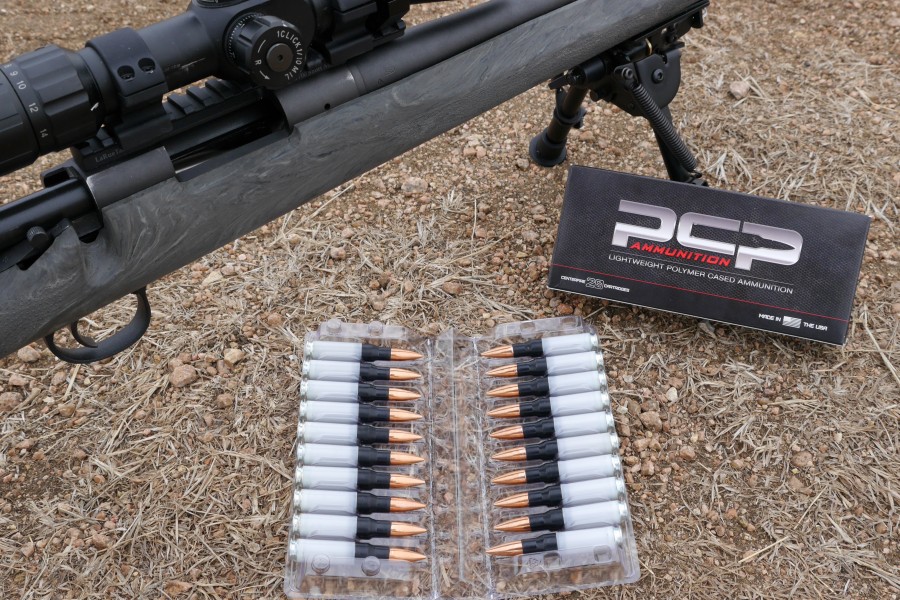
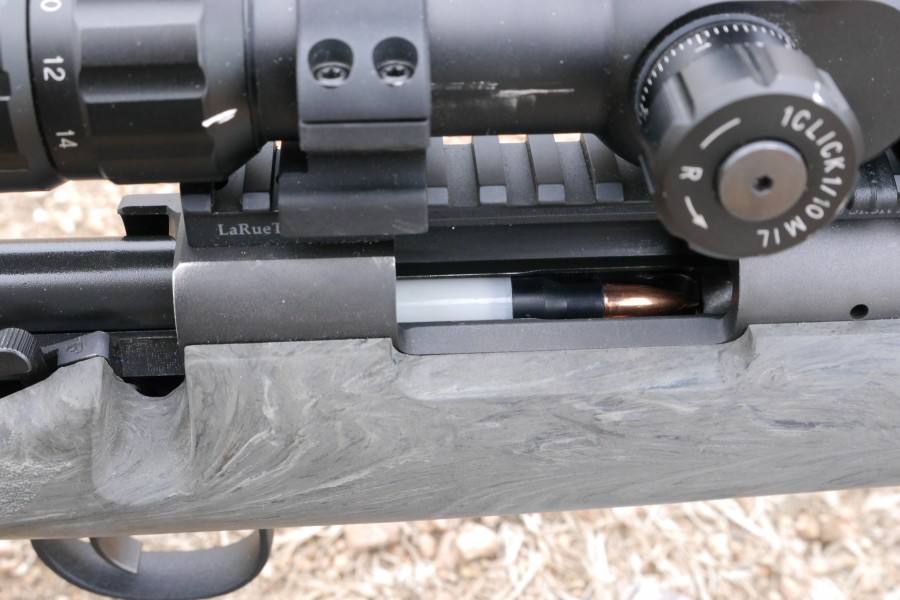
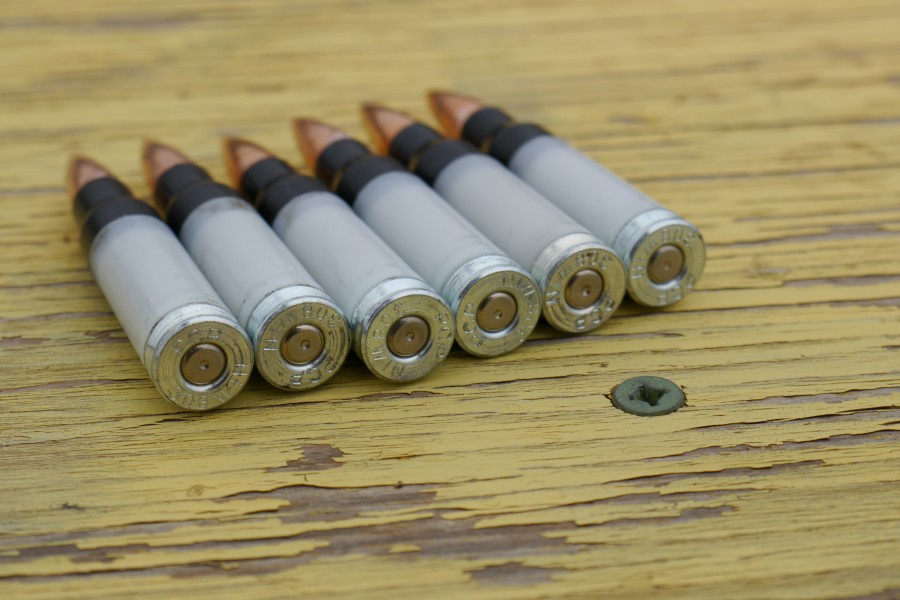
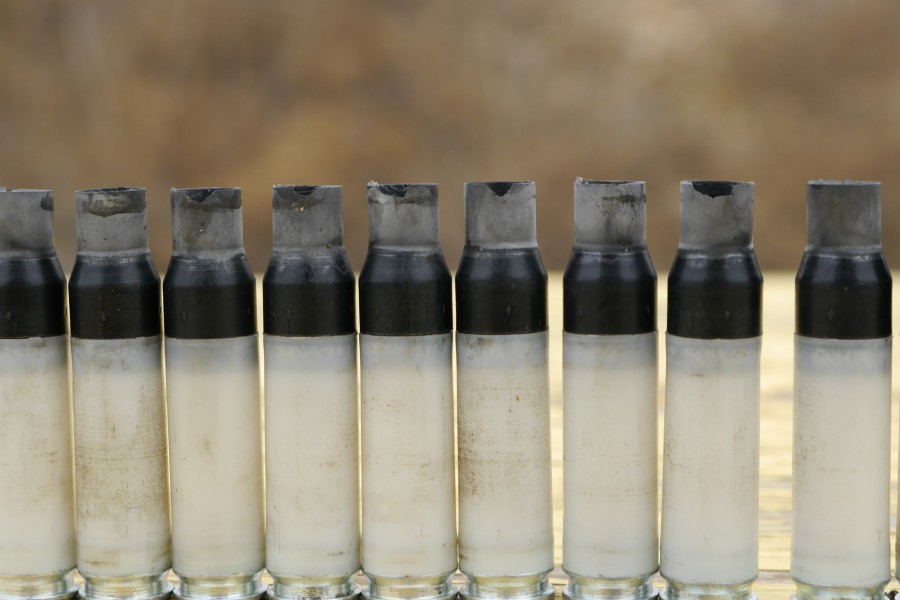

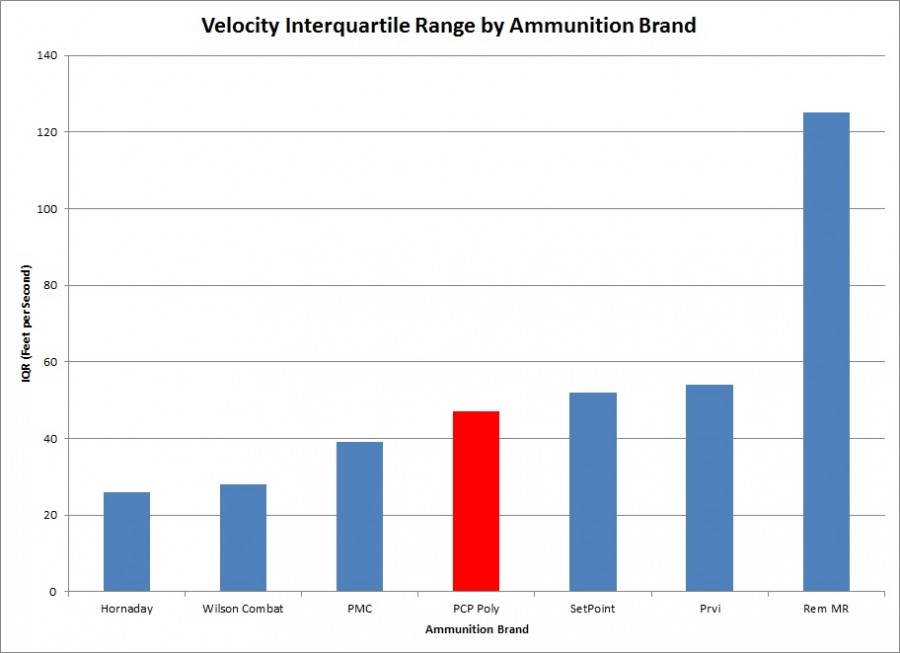




I can see the MDA/MAIG Headlines now:
oh my God! This may lead to undectable PLASTIC GUNS!!! We can hide bullets in our shoes!!! Danger Will Robinson! Danger!!!
I would respond. But, then I remembered: the civilian disarmament industrial complex doesn’t deal in facts, logic, or reason. Our collective breath would be utterly wasted.
You mean like the phosphorous backed heat seeking antiaircraft terrorist assault big clip .50 cal ammunition?
How are they going to avoid it being nick named,
“Devil Dust”
You mind telling me where you found that .223 Wolf ammo for $0.21/round?!
Hmmmmm…I can’t help but wonder of this will either run afoul of the Undetectable Firearms Act or prompt some scaremonger to push a new one.
How is it undetectable? You can obviously see a metal bullet. Don’t tell me that the average person is that stupid.
Never, and I mean NEVER, underestimate the stupidity of people. Especially average people.
ESPECIALLY low Information Demonrat voters.
“Never underestimate the power of stupid people in large groups”
Especially in large mobs.
The anti’s argued the Glock would be undetectable when polymer frames first gained popularity even though the slide, barrel, and components inside the frame are all metal.
And the push to re-enact that bill because of the 3d printer guns also failed to acknowledge that bullets are made of metal and show up on x-ray.
You clearly haven’t met my mother in law, sister, and my brother in law and his wife.
In response to:
“Don’t tell me that the average person is that stupid.”
Sorry, but the average person (especially the anti-gun nut) IS that stupid.
he’s being sarcastic, jeez you’re slow. he’s making fun of all the dumb politicians and anti-gunners who said Glocks and polymer type guns could get through metal detectors which was and is totally untrue since the majority of the gun is constructed from metal.
You mean like plastic-shelled shotgun ammo? 🙂
FGMM please.
You ran 20 rounds through a Remington 700 and 6 rouunds failed to fire? Ouch! That’s worse than fifty-year-old rimfire .22 LR!
How well does it feed out of a magazine into a semi-auto?
The website show proprietary vids with a AR-10. Feeding as flawless…in the videos shown on the website. Not sure if anyone has done an unbiased semi auto review.
My criteria for any caliber is: how many times can I reload it? Sounds like this stuff may never be reloadable. Still, it’s worth keeping an eye on.
You’re thinking like it’s still the 20th Century. The appeal of polymer ammo is that, once the kinks are worked out, you 3D print new cases at home. I doubt this will ever be commercially successful, but if they prove polymer cases are strong enough, I’ll add a 3D printer to my reloading bench and stop breaking my back picking up range scrap.
Or, you sweep up the plastic cases, melt them down, and use that plastic to print new ones.
3D printing is getting tossed around as the wave of the future way, way too much. You can’t print plastic like the one used in these casings on any kind of stereolithograph machine available to plain old consumers, it’s too tough and heat-resistant to work with the melting head that feeds the material. The appeal of these rounds is that eventually they’ll become the new steel-cased ammo, cheaper than brass so you don’t care that it’s one-use and sweep it into the bin. Theoretically, this could make steel-cased ammo look expensive, which would be really nice. As long as they don’t load it with bimetal bullets, and make it available as primed and unprimed “brass”.
I’ve been shooting more nylon-jacketed bullets lately and I have to say that it isn’t anywhere near as dirty as you’d expect. I think the little bit of interior case neck that will likely vaporize and deposit on the throat will A) not be enough to affect accuracy or pressure, and B) get scoured out by every followup round anyway. You’ll still have to clean the gun after, but it shouldn’t give you any additional work over standard ammo.
These are designed for one-time use only. That’s one of the benefits in a military setting; the enemy cannot collect and reload the used casings. Also, forget about recycling them into casings again. Plastic simply doesn’t recycle and maintain the performance characteristics of the virgin material–never. (And I never say never) I’d be surprised if the casings would even be useful for the crappy plastic that goes into picnic benches or deck boards. Even deck board material takes a high percentage of virgin resin to make them useful; far from 100% post consumer recycled plastic.
I applaud them doing something new, but I think it will take a long time, much longer than expected to get this to a point where I’d buy a box. Like 5+ years or longer. Work out the kinks in production and send tens of millions or rounds downrange and sign a major LE/MIL contract and get enough production to bring costs way down…then I’ll consider buying a box.
Can you run nitrocellulose through a 3-D printer? Then just print the ammo off in one pass – case, bullet, propellant. Maybe stick a primer down to the table first and print around/over it…..
Forget the reloading part, if there is other material left behind other than powder residue and copper fouling then that can be a problem. What happens when those chunks stay in the chamber or barrel or in the gas system of your semiauto. A chunk left behind could be a obstruction to other following bullets.
Please do scopes and rings a favor, have someone else mount your scopes, you’re killing them!
I are not impressed.
I too am glad to see some experimentation with ammo.. it’s the biggest expense of this sport/hobby if you shoot in any volume.
I would have thought the plan would have been to undercut the Russian ammo prices, and appeal to the “blaster” shooters. They’d be able to make some inroads and spread the word that plastics cases are not the next incarnation of the devil, and work pretty good. Then they can work into the higher performance regions. Coming out with plastic cased matched ammo really sets the bar high, and your dealing with people that have really high expectations that are made with tech they are very comfortable with. When I really need to make that shot (competition and hunting) I’m going to choose ammo I have confidence in especially if costs are close.
They really should find a way to sponsor one of the top 3 gunners. If it works well there and if cost competitive, word will get out.
Will they produce handgun rounds to go with my ceramic glock? (sarcasm)
Combine these with 125gr frangibles. Lighter powder load and a more consistent bullet.
I was thinking this too.
Really knock the price down.
on a more serious note…if they can get these to around 60 cents a round in packs of 50, I’d be all over it.
What’s the point again of paying ~$2/rd for plastic ammo that has a 6/20 failure rate? If it was ~$.25 cents/rd I’d be interested, but so far I’m yawning.
I am also part of the test group. I haven’t shot it yet to fill out my report yet, but honestly I was astounded at the cost. The first thing I am going to tell them is that the cost is prohibitive. They need rounds that are priced competitively with M80 ball, not premium match ammunition. The only advantage right out of the box that I see is weight. The rounds are indeed lighter than their brass-cased equivalents. However, at their current cost I’ll stick to bulk M80 ball, thank you.
I was going to test mule my LTR .308 with Burris XTR 312. Until I saw the price. Then, not so much.
At $0.50/rd (2014$) perhaps a idea. Looks like a “solution” in search of a problem.
Sounds like your mind is already made up. Send your ammo to me, I’ll shoot it and provide a report to PCP. I’m not joking.
My mind isn’t made up. Even if it were expensive, there is a military/law enforcement market for rounds that weight less. The book “The Soldier’s Load and the Mobility of a Nation” comes to mind.
However, I find it hard to believe that a polymer casing costs more to produce than a brass one. Perhaps they’re just trying to fuel the company with funds from the initial run because start-up was expensive. I can accept that. However, the manufacturing learning/experience curve should already be in effect. Each time they double production, their costs decrease. As such, if they wish to survive as a company they need to either:
1) Outperform brass-cased ammo in terms of reliability/consistency/accuracy/velocity
OR
2) Be both lighter and more inexpensive than bulk ammunition while maintaining or building on the performance of bulk ammunition.
My comments to them will reflect such. I will be testing them through an LMT MWS. I plan on load/extracting the round a dozen or so times in order to test the bond between the metal rim and the polymer body. I want to see if it’s a failure point.
I’d feel more confident using polymer than steel ammo. Plus I’d expect polymer won’t scratch up your firearm like polymer can.
When I first saw the picture, I thought, “Someone else doesn’t want us reloading their ‘brass’.” I can’t believe that anyone expects to be able to reload these cartridges; I would expect them to be barely strong enough for one round of shooting, much less two. What does PCP say about reloading them? (I expect them to disclaim it entirely.)
I can see a future for this specific polymer formula in lower-pressure cartridges like the subsonic .300 Whisper or .300 AAC Blackout, where a good factory load could overcome a bias towards reloading the brass.
Not reloadabe.
Since they are not reloadable, there won’t be any scroungers cleaning up the left overs from the range or the forest. Just what we need–more plastic trash.
at $2 a round and bulk ammo quality, I don’t expect them to find their way to many ranges near you, so you have little to worry about. I’ll stick to M80 Ball, scrounging up my brass and handloading… which has even less metal waste if we’re all in on the environmental friendliness train.
Hmm. You know I’m unlucky enough to own a CETME. And one of the PITA parts of that is that (and the G3 too) is that it is VERY rough on brass. I wonder if this might be a solution for me.
But ehh… probably just end up going with some cheap PMC when I’m ‘plinking’.
Aanndd I should have paid attention… $2 a shot? Not gonna work for me. XD
Here’s to the future!
Why?
That’s my question. What is the benefit for the consumer? First I was thinking cost. Not at $2/round. I guess light weight? Doesn’t matter much to me.
From a geek “look what they came up with” perspective it seems interesting, but not from a buyer’s perspective.
It’s for the future. A ready supply of decent ammo at a consistent price would be nice. Price will come down as production increases. Otherwise we turn into that Union Army officer that resisted the change over from muzle loaders to breech loaders using cartridges. He sat on the board that approved such things and objected because it was new and relatively untried tech and he was afraid the troops would be wasteful with their ammo supply if loading was so easy.
It will be hard to replace brass cases in some applications. High end target matches come to mind for that. But for the average schlub like myself that just wants dependable and chweap ammo, why not? I’ve used all plastic shotgun shells and found them acceptable for my needs.
No reloading. Pass.
The ammo is significantly lighter than brass or steel cased ammo. It’s also made of a different material, so could potentially be easier to keep stocked. As others have mentioned, the potential exists to 3D print cases.
Hey, remember how much digital cameras used to suck?
You lost at me “$2.00/round”!
Lower velocity, not match grade, and non-reloadable should make this the cheapest .308 ammo on the market.
“One of those new products is polymer cased ammunition, replacing the expensive brass cases with cheap plastic and saving not only a ton of weight but also rare(ish) metals.”
If one goal is to reduce costs….
“The ammo is planned to run somewhere around $2/round….”
…then they have failed miserably.
“…saving not only a ton of weight but also rare(ish) metals. ”
Well now those rare metal cases are reusable and recyclable, no? What are the polymer cases made of? Petroleum products? There was a time that we were concerned about non-renewable resources such as petroleum. Are the polymer cases either reusable or recyclable?
Nice to see some stats behind a review, good job, this is how comparison reviews are done. In summary, no statistically significant different between PCP and the other .308 ammo you included for comparison. I would say that’s pretty f’ing good for a first of a kind new product introduction that’s still in development. ….I have to say though, if you’re doing stats get JMP dude, it’s the cat’s pajamas.
I think most people are missing the point, this is the leading product of it’s type and still in development. Stop thinking in the now and imagine where this technology will be 5-10 years from now. Think of what you would have paid for a computer in 1996 that you could play Call of Duty 4 on, a few million dollars….if it was even possible with the technology back then? Now you pay what, <$500 for a complete setup that can do this. Give it some time, based on initial results I'm extremely bullish.
Magpul buyout of PCP??? You heard it here first!
So you are current paying to beta test this proof of concept ammo? I’m curious to see how the plastic cartridges do, and best of luck to the designers, but this just feels like a way of offloading R&D costs. Granted, the development costs may have been prohibitive otherwise.
Were your comments for me or Nick? If they were me…..
I’d be more inclined to provide my technical expertise in a consulting role to PCP.
I think these initial results are favorable for them to query the investor market and secure additional funds to continue development….which is how a lot of technology evolves before the end user (customer) is asked to drop a dime.
Tom could you explain what is wrong with the way he mounts his rings and scope?
place a hardened steel pin in each bullet and it will be easily detected 🙂
To everyone bitching about the price, stuff it. First you make it work, then you make it cheap. There is much potential here, but it’s new, and it will take time to achieve all their engineering goals. In the meantime, marvel at the idea.
Couldn’t agree more. I’m guessing that most of the people making comments on this article have never had to create something that didn’t yet exist.
At $1.99/ round, NOT reloadable, high IQR number(LOW = GOOD)…I’m not sold and I never will be…just not worth the time nor effort…
People, people! $2 a round would not be the retail price. They’re still testing the round, they’re not mass producing it. The cost savings come from volume and they’re not producing in volume yet!
What kind of groups did you shoot? What kind of scope were you running? Inquiring minds wanna know.
Bits knocked of the lip of the case? Oh, ouch. Do NOT want. Maybe mold the lip of the case into something like a base sabot, intentionally blowing off the end of the case and out with the bullet? That would preclude reloading, of course, but since it seems you should not reload them anyway, it would almost be a safety feature.
Reloading? Try loading… drop off your recyclable plastics and pick up freshly manufactured plastic shell casings.
This will be great once we develop the technology to manufacture large amounts of small things made out of plastic.
nice to see someone trying something new. however at $2 around give me a break I can buy brass cased for 68 cents to a dollar around why would I ever go to something plastic that was twice as much, and six rounds felled to fire out of a 20 round box that is horrible. reminds me of all the people that use steel case ammo in other weapons then the AK 47. it doesn’t hurt the ak-47 chamber because the rounds are tapered like pizza slices not so with American cartridges or chambers. by all means keep up the good work and keep trying to get it right but I need to see a price tag that’s at least 50 cents around or maybe even a little less.
we’re only complaining because that was the information that was given to dollars per round.Plus why would you ever let public shoot or even guys from TTAG shoot something that you haven’t quite gotten wright yet just doesn’t make any sense. knowing darn well that they’re going to do a review on it you would at least thought that they would have giving you some ammunition that would have gone off.
Price point now is not an issue. The monkey is manufacturing throughput. Cycle time for injection molding is 30 secs. Mold cost is north of 250K. It’s a matter of number of cases per stroke. If someone can comment on steps & time to manufacture bass….then you have the answer if it will be viable.
On the stroke side its all about flowing material, does the blend (plastic) heat & cool well. The case has to remain thin (modeling off brass) that’s why your having case separation at the bullet. What would be cool is if they could mold a convergent & divergent channel thus giving them more material while increasing the pressure. However that requires specialize molding.
The main appeal of this ammo was supposed to be the weight. Did you measure how it compares to regular .308 rounds with the same-weight bullets?
Looks like pure junk. Maybe this would work for indoor range loads or gallery loads so they can mass produce practice ammo. I don’t think it will ever compare to real brass or even steel cases, for serious match loads or hunting loads, and wouldn’t even want to load it ever into a defensive weapon.
“So while it probably didn’t follow the projectile down the barrel”
Will it end up in the action?
3 piece plastic, plastic, metal in .308, that’s a miracle of modern manufacturing…it won’t be cheaper than metal for a long time due to complexity, patent, rarity, etc. …, and why hasn’t anyone diecast cheap pot metal AL cases ?
I wonder what that neck is, ABS, polycarbonate, ? … they’re inj. molded …. 3D printed components would need acetone vapor smoothing/treating at the very least if even ever possible in ABS..
plastic bullets should be the heavy .43 gram airsoft bb material (twice as heavy as unofficial industry standard .20 gram 6mm plastic bb)….a .50 bmg one could be used for deer hunting and could spark more interest/ownership in that caliber with cheaper ammo.
speaking of 3DP, I wanna see this guy cast a steel rifled barrel from this, maybe with lost foam process:
http://www.youtube.com/watch?v=kisQAz8z4t0
Draw Rifled Gun Barrels in Sketchup, 3D Print a Rifled Barrel!
Does anyone here have any experience with Wolf Gold Performance ammo? I can get it for around .34 cents a round and it’s brass case reloadable, boxer primed, non corrosive and SAMMI/Nato compliant. Sig says as long as it has one or the other of the compliant stamps, their good on me using it. Just wondering if anyone has used this ammo.
Thanks for the interesting article. I wasn’t too familiar with these polymer casings. I’ll definitely read more about it.
This is similar to the plastic ammo sold in the ’80’s. A Washington state company sold .38 Special ammo that was reloadable with a simple priming/de-priming tool. Bullets were seated by hand using a proprietary factory “heeled bullet”. Case failure for me was around 10% with pieces of case mouth disappearing.
Last year I inspected some sample plastic cases in 7.62 NATO and .50 BMG produced on a test basis at Kellogg Plastics (Kellogg, Idaho). Interesting concept that has failed since its first appearance. Perhaps this company will solve the problems.
Unless plastics improve dramatically it will never have the ability to be used in the real world. I would not have depended on the .38 ammo 30 years ago nor would I depend on this product as it obviously is sub-par.
I suspect the misfires are a result of inadequate head spacing. The primer strikes, especially if hit 6 times, are obviously too light. Run them in a cartridge gage and they will most likely fall outside of the acceptable range.
I read this piece of writing completely regarding the comparison of most
up-to-date and previous technologies, it’s remarkable article.
If the polymer cases are a “cheaper” alternative to the semi precious brass cases (as you state), then why would they cost so much more to purchase? Why would anyone pay more for a round with less velocity, more possible issues and the inability to reload the cases?
Am I missing something here?
One time military use combined with low weight.
Hmmm, the case is the least useful part of the cartridge. The primer sparks the charge and weighs nearly nothing, the charge is the working fluid, the bullet actually leaves the weapon and strikes the enemy, whereas the case is merely a gasket. If the case can be replaced with a polymer instead of brass, then 7.62 x 51 becomes our battle cartridge again.
Comments are closed.